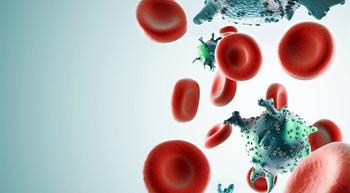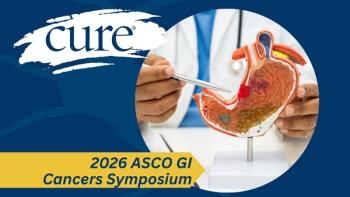
Inaccurate Information on Cancer Diagnosis and Treatment Common on Social Media Sites
Articles containing misinformation on social media sites like Facebook and Twitter were more likely to be shared and liked than those with accurate information.
Approximately one-third of articles on breast, prostate, colorectal and lung cancers shared on social media sites may contain misinformation that may lead to potential harm in patients.
Findings from this study were published in the Journal of the National Cancer Institute.
“The real concerning part about (these findings) is that this misinformation has consequences,” said Dr. Skyler B. Johnson, assistant professor in the department of radiation oncology at the University of Utah Huntsman Cancer Institute in Salt Lake City and lead author of the study, in an interview with CURE®. “Our expert reviewers assessed that of the articles that contain misinformation, almost 4 out of 5 of those contained harmful information.”
Johnson added that he and his team found that articles with misinformation were more likely to be shared on sites like Facebook, Twitter, Pinterest and Reddit.
“(Patients) are more likely to see these types of articles (with misinformation) than they would factual and safe articles because these articles get more engagement online, whether it be through comments, shares, likes, what have you,” he said.
In this study, researchers reviewed 200 articles total, which included 50 of the most popular social media articles on each of the four most common cancers: breast, prostate, colorectal and lung cancers. Two cancer experts assessed these articles for misinformation and harmful information.
“Misinformation was assessed by our cancer experts to be those articles that had primary cancer treatment claims that had a mixture of false and true information, mostly false information or entirely false information,” Johnson said. “Then on the harmful (information) side, this could have been assessed in any number of different ways, but it (included) recommendations to delay proven cancer treatments, claims of ineffective cancer treatments, recommendations for cancer treatments that had been disproven, recommendations for treatments that are unproven and then recommendations for treatments that are either very costly out of pocket or require travel, which could be costly as well, so there (are) financial harm implications.”
Of the 200 articles included in this study, 32.5% contained misinformation and 30.5% contained harmful information. In addition, 76.9% of the articles that contained misinformation also included harmful information.
Researchers also assessed the number of engagements (shares, likes, etc.) that articles with misinformation received on social media sites. Articles with misinformation had a greater median number of engagements compared with factual articles (2,300 engagements versus 1,600 engagements). Articles with harmful information also had more engagements than safe articles (2,300 engagements versus 1,500 engagements).
Although researchers were unable to look at user-level data in this study, Johnson said he may have an idea as to why articles with misinformation or harmful information may receive more engagement than factual articles.
“There's something about patients who want to find interesting and unique information that might make them feel special or privileged, where they take control and autonomy over their own care and feel like they're taking an active part in curing their own cancer,” he said. “My major concern, and the concern of the coauthors of this work, was that there's misinformation silos, where the social media companies’ algorithms amplify this type of information, wherein it's more available.”
Another limitation to this study is the fact that researchers focused on articles on common cancers. Despite this, Johnson thinks that findings from this study can be applied to other cancer types.
“We're currently doing some back-end database article-specific work evaluating which articles are associated with higher rates of misinformation and article-specific factors,” he said. “Interestingly, at least, it appears that cancer types that have not quite as good survival rates as cancers like breast and prostate cancer have more misinformation and harmful information. I would say that it's applicable. And it might even be more applicable in other settings where cancers have lower cure rates than for breast and prostate (cancers).”
Johnson was not only a researcher of this topic, but he also had personal experience in this area, as his wife received a diagnosis of cancer when he was in his second year of medical school.
“When (my wife) was diagnosed with her cancer, the first thing that we did — and I suspect that most people do this — is hop online and Google what's the treatment, what's the prognosis,” Johnson said. “And fortunately, … I had some medical training, and I was able to sift through what was inaccurate information and what was accurate information. One thing that her and I both came away from that experience with was a knowledge that there's a lot of misinformation out there. It is pretty challenging to be able to know who to trust and whether what's being said is true or not.”
This experience with misinformation on social media sites also ties into Johnson’s experience as a radiation oncologist.
“I have seen a number of patients who have unfortunately believed the misinformation that they saw online, and that's led to either a delay in the initial diagnosis of their cancer, a delay in receiving treatments and, in some very unfortunate circumstances, the complete refusal of the proven cancer treatments that we do have,” Johnson explained. “This is heartbreaking, especially for those patients that have curable cancers, because the consequences of those decisions are dire. I've seen it personally. If you talk to many oncologists, they'll tell you that it's one of the sadder cases that we see. And unfortunately, we do see it fairly often.”
As common as misinformation and harmful information is on social media, Johnson had some advice for patients as they search online for resources.
“(Patients) should be looking for websites that (are) .edu websites, often .gov websites,” Johnson said. “The National Cancer Institute is a great resource for patients. … Oftentimes, I'll (suggest) sources that (patients) should be wary of. Those are often (sites) where claims are too good to be true or they elicit conspiracy theories where treatments are ineffective and things of that nature. But I also make sure that patients know that lines of communication are open; if they read something online or if they hear something from a well-meaning family or friend, they should feel comfortable asking me about it. The last thing that I'd want them to feel is judged or that I wouldn't be understanding of their interest. Our goals are similar and that's to cure the cancer and make sure that we do it with as little side effect as possible. When our goals align, we work as a team, and that's how I hope we can approach things.”
For more news on cancer updates, research and education, don’t forget to




